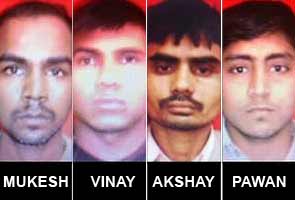New Delhi, Sep 11: A fast track court, which has convicted four persons in the December 16 gangrape-cum-murder case, on Wednesday fixed September 13 for pronouncing the quantum of sentence to be awarded to them.
Additional Sessions Judge Yogesh Khanna reserved the order on punishment after hearing arguments of the prosecution, which sought death penalty for the four, and the defence lawyers.
The Delhi Police sought death penalty for the four for brutally gangraping and murdering a defenceless 23-year-old girl in a cold blooded manner.
Advancing arguments on quantum of sentence, Special Public Prosecutor Dayan Krishnan said the death sentence should be awarded to the four convicts -- Mukesh (26), Vinay Sharma (20), Pawan Gupta (19) and Akshay Thakur (28) -- as the case falls in the category of “rarest of rare” cases.
The defence lawyers, however, sought a lenient punishment for the convicts, saying life imprisonment in such a case is a rule while death penalty is an exception.
During the arguments, the prosecutor told the court that the convicts do not deserve any mercy, as they killed the helpless girl who kept on pleading for mercy.
“The crime is not only grotesque and diabolic in nature but the barbaric behaviour of the convicts was of the highest kind. Maximum sentence has to be given as the court should see that they have raped and killed a helpless girl, even as she pleaded for her life,” he said.
He said people at large are watching this case and if the convicts are awarded a lighter punishment, the public will lose faith in the judicial system.
“This is an extreme case of depravity and sexual assault of a young girl, who could not survive after their gruesome attack and gangrape.
“The act to damage the girl’s intestines intentionally leaves no scope of sympathy,” the prosecutor argued.
The prosecutor said as per an apex court judgement when there is murder after gangrape, the sentence should be death penalty.
At the start of arguments on point of sentence, convict Mukesh moved an application seeking issuance of contempt notice against Home Minister Sushil Kumar Shinde for his reported statement that death is assured for the four convicts in the case
The court, while convicting the four men on Tuesday, had said that the crime was committed in a “premeditated manner".
The court convicted them for 13 offences including gangrape, murder, unnatural offences, attempt to murder, dacoity, destruction of evidence, conspiracy, kidnapping or abducting in order to murder, while acquitting them of the charge of murder in dacoity.
In the 237-page judgement, which had come six days short of nine months of the incident that shook the nation’s conscience, also found complicity of main accused Ram Singh, who was found dead in Tihar jail during the trial.
On August 31, the juvenile accused was convicted and sentenced to a maximum of three years in a reformation home.
On the night of December 16, last year, Ram Singh, Vinay, Akshay, Pawan, Mukesh and the juvenile had gangraped the girl in a bus after luring her and her 28-year-old male friend, who was also assaulted, on board the vehicle, which was later found to be plying illegally on Delhi roads.
The limbs of the victim’s friend, a software engineer, were fractured in the incident. The girl succumbed to her injuries on December 29, 2012 at a Singapore hospital.





Comments
Add new comment